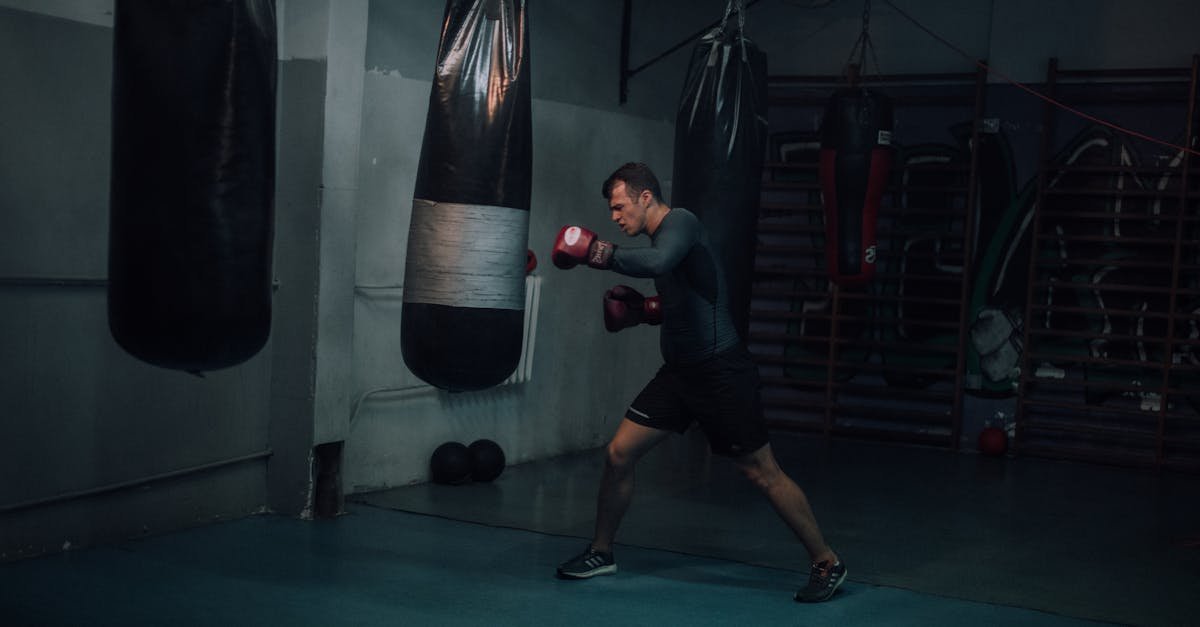Table of Contents
Plyometric Exercises For Explosive Power
What is Plyometrics, Anyway? The Jump Start to Power
Why Should You Care About Explosive Power?
How Do Plyometrics Work? The Secret Sauce Explained
Ready to Jump In? Getting Started Safely with Plyometrics
Unleash Your Power: Top Plyometric Exercises
Building Your Plyometric Plan: Smart Training Strategies
Oops! Common Plyometric Pitfalls to Avoid
Wrapping It Up: Your Journey to Explosive Power
Frequently Asked Questions (FAQs)
Plyometric Exercises For Explosive Power
Ever watched an athlete seemingly defy gravity, launching themselves into the air with incredible force? Or maybe seen a sprinter explode out of the blocks like a cannonball? That jaw dropping power doesn’t just come from lifting heavy weights; a huge part of it is built through something called plyometrics. If you’re looking to boost your athletic performance, jump higher, run faster, or just become a more powerful human being, you’ve come to the right place. Let’s dive into the world of plyometric exercises and unlock your explosive potential!
What is Plyometrics, Anyway? The Jump Start to Power
Okay, let’s break it down. Plyometrics, often just called “plyos,” are essentially exercises designed to make your muscles exert maximum force in short intervals of time. Think quick, powerful movements. The classic definition involves harnessing the stretch shortening cycle (we’ll get to that fascinating bit soon!). Imagine stretching a rubber band and letting it snap back – that’s kind of the idea behind plyometrics. Your muscles load up with potential energy (like stretching the band) and then release it explosively (the snap!).
It’s not just about jumping, though jumping is a big part of it. It includes exercises like hopping, skipping, bounding, throwing, and quick changes of direction. The key is the rapid transition from stretching a muscle (eccentric phase) to contracting it (concentric phase). It’s about training your muscles and nervous system to work together more efficiently to produce force fast. So, instead of just being strong, you become powerful. Strength is the ability to exert force; power is the ability to exert force quickly.
Why Should You Care About Explosive Power?
You might be thinking, “Okay, sounds intense, but is it really for me?” The answer is likely yes! Explosive power isn’t just for elite athletes. Let’s see why.
The Edge for Athletes
For anyone involved in sports, explosive power is often the secret weapon. Think about it:
- Basketball/Volleyball: Jumping higher for rebounds, blocks, or spikes.
- Soccer/Football: Exploding past defenders, making quick cuts, jumping for headers.
- Track and Field: Powering out of the blocks in sprints, launching in jumps (long jump, high jump), propelling implements in throws (shot put, discus).
- Tennis/Baseball: Generating racquet or bat speed for powerful serves and hits.
- Martial Arts: Delivering fast, powerful strikes and kicks.
Basically, any sport that requires quick bursts of speed, agility, or jumping height relies heavily on explosive power. Plyometrics directly train the neuromuscular system to produce these rapid, forceful contractions, translating directly to better performance on the court, field, or track.
Beyond the Field: Power in Daily Life
But wait, there’s more! Explosive power isn’t just a sports specific trait. Even if you’re not competing, developing power can benefit your everyday life:
- Reacting Quickly: Ever stumble and need to catch yourself? That requires a rapid, forceful muscle contraction – essentially, power. Improved power enhances your reaction time and stability.
- Preventing Falls: Especially as we age, the ability to react quickly and powerfully can be crucial in preventing falls and related injuries.
- Making Activities Easier: Lifting a heavy box onto a shelf, quickly climbing stairs, or even just getting up from a low chair efficiently involves elements of power.
- Boosting Metabolism: High intensity activities like plyometrics can give your metabolism a nice kickstart.
So, whether you’re chasing athletic glory or just want to move through life with more vigor and resilience, developing explosive power has real, tangible benefits.
How Do Plyometrics Work? The Secret Sauce Explained
Alright, let’s peek under the hood. How does jumping around actually make you more powerful? It comes down to some cool physiological magic, primarily involving the Stretch Shortening Cycle and muscle fiber recruitment.
The Stretch Shortening Cycle (SSC): Like a Coiled Spring
This is the heart and soul of plyometrics. The Stretch Shortening Cycle (SSC) is a natural action of your muscles. Think about trying to jump as high as you can. What do you do instinctively? You dip down quickly first, right? That dip is the stretch (eccentric) phase. Your muscles lengthen under tension, storing elastic energy like a coiled spring or that rubber band we talked about.
The crucial part is the very brief pause (amortization phase) between the stretch and the powerful contraction (concentric phase) – the jump itself. The shorter this pause, the more of that stored elastic energy you can use, adding it to the force your muscles generate. Plyometrics train your body to make this transition incredibly fast and efficient.
Imagine trying to jump high without dipping down first. You wouldn’t get nearly as high, would you? That’s because you wouldn’t be taking advantage of the SSC. Plyos essentially supercharge this natural mechanism, teaching your muscles and nervous system to store and release energy more effectively, leading to much more powerful movements.
Waking Up Your Fast Twitch Fibers
Our muscles are made up of different types of fibers. We have slow twitch fibers, great for endurance activities like long distance running, and fast twitch fibers, which are responsible for generating force quickly and powerfully. They fatigue faster, but they pack a punch!
Plyometric exercises specifically target and recruit these fast twitch muscle fibers. Regular strength training builds muscle size and strength, but plyometrics train those fibers to fire *faster* and more synchronously (all together). It’s like upgrading your body’s wiring to send signals more rapidly to the muscles responsible for explosive actions. The more efficiently you can recruit these fast twitch fibers, the more explosive power you can generate.
Ready to Jump In? Getting Started Safely with Plyometrics
Okay, feeling hyped? Awesome! But before you start bouncing off the walls, we need to talk safety. Plyometrics are high impact and high intensity. Doing too much too soon, or using poor form, is a recipe for injury. Let’s lay a solid foundation.
Are You Ready? A Quick Check
Plyometrics aren’t typically for absolute beginners to exercise. You need a decent base level of strength first. Why? Because your muscles, tendons, and ligaments need to be strong enough to handle the forces involved in landing and exploding. A common guideline (though not the only one) is being able to squat 1.5 times your bodyweight. If you’re unsure, focus on building foundational strength with exercises like squats, lunges, and deadlifts for a few months before adding intense plyos.
You should also be pain free. If you have existing joint issues (knees, ankles, hips, back), consult with a doctor or physical therapist before starting plyometrics. Listen to your body!
Don’t Skip the Warm Up! Seriously.
I can’t stress this enough. Jumping into plyos with cold muscles is asking for trouble. Your warm up should prepare your body specifically for explosive movements. Think:
- General Warm Up (5-10 mins): Light cardio like jogging, cycling, or jumping jacks to get the blood flowing and increase core body temperature.
- Dynamic Stretching (5-10 mins): Focus on movements that take your joints through their full range of motion. Examples include leg swings (forward/back and side to side), torso twists, arm circles, walking lunges, and high knees. Static stretching (holding a stretch) is generally best saved for after your workout.
- Activation Drills (Optional but helpful): Things like glute bridges or band walks to wake up key muscle groups.
Your warm up primes your muscles, improves joint mobility, and gets your nervous system ready to fire on all cylinders. Treat it as an essential part of your plyometric session.
Mastering the Landing: Your Safety Net
This is perhaps the most critical safety aspect. How you land is everything. Poor landing mechanics put immense stress on your joints, particularly your knees and ankles. Focus on:
- Landing Softly: Think “quiet landings.” Absorb the impact through your muscles, not by jarring your joints. Imagine landing like a cat.
- Landing Mid Foot: Land on the balls of your feet and then roll through to your midfoot/heel to absorb force. Avoid landing flat footed or only on your toes.
- Bent Knees and Hips: Always land with your knees and hips flexed (bent) to act as shock absorbers. Never land with straight legs!
- Knees Aligned: Keep your knees tracking over your toes. Don’t let them cave inward (valgus collapse) – this is a major risk factor for knee injuries.
- Stable Core: Keep your core engaged to maintain balance and control throughout the movement.
Practice landing from small hops or jumps off a low step before progressing to more intense exercises. Focus on quality over quantity. Nailing the landing technique is non negotiable!
Unleash Your Power: Top Plyometric Exercises
Alright, foundation built, safety checks done. Let’s get to the fun stuff! Here are some effective plyometric exercises, broken down by body area.
Lower Body Blasters: Building Your Launchpad
Your legs and glutes are the powerhouse for most explosive movements. Train them well!
Box Jumps: King of the Hill
What it is: Jumping from the floor onto a stable box or platform.
How to do it: Stand facing a sturdy box (start low!). Dip down into a quarter squat, swing your arms back, then explode upwards, swinging your arms forward, landing softly on top of the box with bent knees. Step down (don’t jump down initially to reduce impact). Focus on explosive upward movement and controlled landing.
Why it rocks: Excellent for developing vertical jump height and overall lower body power. Teaches powerful hip extension.
Squat Jumps: Simple but Mighty
What it is: Performing a bodyweight squat followed immediately by an explosive jump.
How to do it: Stand with feet shoulder width apart. Lower into a squat (thighs parallel to the ground or slightly above). Immediately explode upwards, jumping as high as possible. Land softly, absorbing the impact by going straight into the next squat repetition.
Why it rocks: Great entry level plyo. Builds explosive leg power and reinforces good jumping and landing mechanics.
Lunge Jumps: The Unilateral Challenge
What it is: Explosively switching leg positions in the air from a lunge.
How to do it: Start in a lunge position. Jump vertically, switching your legs in mid air, and land softly back in a lunge position with the opposite leg forward. Keep your torso upright and core engaged.
Why it rocks: Develops single leg power and stability, crucial for running, cutting, and many sports specific movements. Also improves coordination.
Broad Jumps: Going the Distance
What it is: Jumping forward horizontally as far as possible.
How to do it: Stand with feet hip width apart. Dip down, swing your arms back, then explode forward, swinging your arms for momentum. Jump as far as you can, landing softly on two feet with bent knees. Stick the landing briefly before standing up or repeating.
Why it rocks: Builds horizontal power, essential for sprinting acceleration and long jumping.
Upper Body Power Builders: More Than Just Legs
Don’t neglect your upper body! Explosive pushing and throwing power is vital in many activities.
Plyo Push Ups: Explode Off the Floor
What it is: A push up where you explosively push yourself off the ground, ideally getting your hands airborne (clapping is optional!).
How to do it: Start in a standard push up position. Lower your chest towards the floor. Explosively push back up with enough force that your hands leave the ground. Land softly back into the push up position and immediately lower for the next rep. If clapping, do it quickly while airborne. Can be modified by doing them on your knees or against an elevated surface.
Why it rocks: Develops explosive pushing power in the chest, shoulders, and triceps.
Medicine Ball Throws: Powerful Pushing
What it is: Throwing a medicine ball forcefully from your chest, usually against a wall or to a partner.
How to do it: Stand facing a sturdy wall (or partner) a few feet away, holding a medicine ball at your chest. Step forward (or use a square stance) and explosively push the ball forward from your chest towards the target. Catch the rebound (or have your partner throw it back) and repeat.
Why it rocks: Great for developing chest and shoulder power, mimicking movements like passing in basketball or pushing opponents in football.
Medicine Ball Slams: Unleash Aggression (Safely!)
What it is: Lifting a medicine ball overhead and slamming it forcefully down onto the ground.
How to do it: Stand with feet shoulder width apart, holding a medicine ball. Raise the ball overhead, slightly extending your back. Forcefully contract your abs and lats, hinging at the hips and throwing the ball straight down between your feet as hard as you can. Squat down to pick it up safely and repeat.
Why it rocks: Develops core power, lat strength, and full body coordination. It’s also a fantastic stress reliever!
Full Body Integration: Putting It All Together
Some exercises challenge your whole body to work explosively together.
Burpees (The Explosive Kind!)
What it is: The classic burpee, but emphasizing an explosive jump at the top.
How to do it: From standing, drop into a squat, place your hands on the floor, kick your feet back into a push up position. Perform a push up (optional but adds intensity). Quickly jump your feet back towards your hands, then explode vertically into a jump, reaching your hands overhead. Land softly and immediately begin the next rep.
Why it rocks: A full body conditioning and power exercise. Improves cardiovascular fitness, agility, and explosive hip extension.
Building Your Plyometric Plan: Smart Training Strategies
Okay, you’ve got the exercises. Now, how do you put them together into a workout that gets results without getting you hurt? Programming is key.
How Often & How Much? Finding the Sweet Spot
Plyometrics are intense. Your body needs time to recover and adapt.
- Frequency: Start with 1 2 sessions per week, with at least 48 72 hours of rest between sessions targeting the same muscle groups. Don’t do intense plyos every day!
- Volume: Volume is often measured in foot contacts (for lower body) or throws/reps (for upper body). Beginners should start low. Think 40 60 foot contacts per session (e.g., 3 sets of 5 box jumps = 15 contacts, 3 sets of 8 squat jumps = 24 contacts, total 39). Gradually increase volume as you adapt, but prioritize quality over quantity. Stop the set or session if your form breaks down or your jumps lose pop.
- Placement: Perform plyometrics when you’re fresh, typically after your warm up but *before* heavy strength training or conditioning. You want your nervous system sharp to maximize power output.
Why Rest is Your Best Friend
Rest within the plyometric workout itself is crucial for maintaining power. Because you’re aiming for maximum effort on each rep, you need adequate recovery between sets.
- Rest Between Reps: For exercises like box jumps or broad jumps where you reset, take your time. Focus on quality.
- Rest Between Sets: Take longer rest periods than you might for traditional strength training. Aim for 2 3 minutes (or even longer for very intense efforts) to allow your neuromuscular system to recover fully. Remember, the goal is power, not cardiovascular fatigue (though you might get some cardio benefit!).
Outside of the workout, prioritize sleep, nutrition, and active recovery (like light stretching or foam rolling) on your off days. This is when your body repairs and gets stronger and more powerful.
Leveling Up: How to Progress Safely
Once you’ve mastered the basics and feel comfortable, how do you keep challenging yourself?
- Increase Intensity Gradually: Move from simpler jumps (squat jumps) to more complex ones (lunge jumps, box jumps). Increase box height incrementally. Add a weighted vest (use caution and only when technique is perfect).
- Increase Volume Slowly: Gradually add more reps per set or add an extra set, ensuring technique remains flawless.
- Decrease Ground Contact Time: Focus on making the transition from landing to jumping even faster (reducing the amortization phase). Think about bouncing off the ground quickly but safely.
- Introduce Variation: Incorporate different types of jumps (single leg, rotational) or throws to challenge your body in new ways.
Always prioritize perfect form over adding more weight, height, or reps. Progression should be patient and deliberate.
Oops! Common Plyometric Pitfalls to Avoid
Even with the best intentions, it’s easy to make mistakes. Watch out for these common pitfalls:
- Too Much, Too Soon: The #1 mistake. Enthusiasm leads to overdoing volume or intensity before the body is ready, leading to burnout or injury. Start slow, progress gradually.
- Ignoring Form (Especially Landings): Sacrificing technique for more reps or higher jumps. Remember: quiet, controlled landings with bent knees tracking over toes. Film yourself if needed!
- Insufficient Warm Up: Skipping or rushing the warm up increases injury risk.
- Inadequate Rest: Not taking enough rest between sets compromises power output and increases fatigue related form breakdown.
- Doing Plyos When Fatigued: Performing plyos at the end of a long, tiring workout means your nervous system isn’t fresh, reducing effectiveness and increasing risk.
- Lack of Foundational Strength: Jumping into plyos without adequate leg and core strength to support the movements.
- Wrong Surface: Performing high impact plyos on overly hard surfaces (like concrete) increases stress on joints. A gym floor, track, or grass is generally better. Avoid overly soft surfaces too, as they can be unstable.
Be mindful, listen to your body, and focus on quality execution every single time.
Wrapping It Up: Your Journey to Explosive Power
So there you have it – a deep dive into the electrifying world of plyometric training! It’s more than just jumping; it’s a scientifically backed method for reprogramming your body to produce force rapidly. By understanding the Stretch Shortening Cycle, prioritizing safety and proper technique (especially those landings!), and structuring your training intelligently, you can unlock incredible gains in explosive power.
Whether you’re an athlete striving for that competitive edge or someone simply looking to move better and feel more capable in everyday life, incorporating plyometrics can be a game changer. Remember to start smart, build a solid foundation, listen to your body, and be patient with your progress. The journey to becoming more explosive takes time and consistency, but the rewards – feeling lighter on your feet, jumping higher, moving faster, and possessing a new level of power – are well worth the effort. Now go on, get ready to jump start your power!
Frequently Asked Questions (FAQs)
1. Can I do plyometrics if I want to lose weight?
Yes! While not primarily a fat loss tool like steady state cardio, the high intensity nature of plyometrics burns a significant number of calories during and after the workout (EPOC effect). Combining plyos with strength training and a healthy diet can definitely contribute to weight loss and body composition goals, while also making you more athletic.
2. How long does it take to see results from plyometrics?
You might start feeling “springier” or notice improvements in coordination relatively quickly, perhaps within a few weeks, as your nervous system adapts. Measurable improvements in jump height or sprint speed typically take longer, often requiring 6 8 weeks or more of consistent, well programmed training. Patience and consistency are key!
3. Are plyometrics safe for older adults?
With modifications and a focus on safety, yes! Low impact variations (like stepping quickly onto a low step instead of jumping, or focusing on medicine ball throws) can be very beneficial for maintaining power, reaction time, and bone density. It’s crucial to start with a very low intensity, master landing mechanics, and ideally consult a qualified trainer or physical therapist familiar with working with older populations.
4. Can I combine plyometrics with my regular weightlifting routine?
Absolutely! In fact, they complement each other well. Strength training builds the maximum force potential, while plyometrics teach your body to express that force quickly. A common approach is to perform plyometrics after your warm up but *before* your heavy lifting sets on the same day, ensuring you’re fresh for the power work. Just be mindful of overall training volume and recovery needs.
5. What’s the difference between plyometrics and regular jumping?
While all plyometrics involve jumping or explosive movements, not all jumping is plyometric. The key difference lies in the *intent* and the emphasis on minimizing the ground contact time (amortization phase) to effectively utilize the stretch shortening cycle. Plyometrics are structured exercises focused on maximizing the speed and force of muscle contraction, specifically training that rapid stretch-to-contraction transition for power development, whereas casual jumping might not focus on this efficiency.










